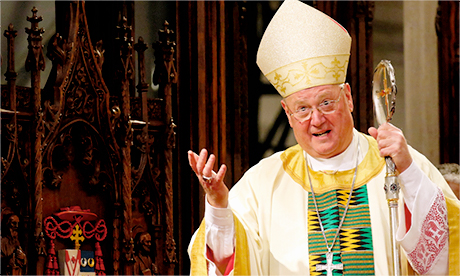Just a few months ago – though it seems like years – Washington, DC was the most coveted see in America.
Though not the largest or wealthiest diocese, its archbishop is often the most politically well-connected cleric in the United States.
All that changed when its former archbishop, Theodore McCarrick, was revealed to be a serial sex abuser.
Then, accusations of complicity began to pile up against his successor, Cardinal Donald Wuerl.
On September 12, his spokesman said he would travel to Rome and ask Pope Francis to accept his resignation.
There is much speculation about who will succeed him, but the consensus is that Archbishop of Washington isn’t the cushy job it once seemed.
Indeed, being a bishop suddenly seems less desirable.
The fallout from the McCarrick is threatening to bring whole dioceses crashing down.
This scandal first erupted on June 20, when the Archdiocese of New York announced that “credible and substantiated” claims had been levelled against McCarrick dating back to 1961 while he was a priest of the archdiocese.
The archdiocese issued a press release, calling it “the first such report of a violation of the Charter for the Protection of Children and Young People ever made against [McCarrick] of which the archdiocese was aware”.
The wording of this statement raised eyebrows: the archdiocese did not say whether allegations had been made by men old enough to legally consent.
New York’s powerful archbishop, Cardinal Timothy Dolan, made matters worse by saying Wuerl shouldn’t resign.
Dolan called him a “good friend” and “tremendous leader”, and suggested he was being judged too harshly by the laity.
The laity, in turn, were outraged.
Some of Dolan’s conservative critics accused him of being beholden to the so-called “lavender mafia”, also citing his decision to allow gay pride groups to march in New York’s 2015 St Patrick’s Day Parade.
The Archdiocese of Chicago, too, is becoming ungovernable.
In his “testimony”, Archbishop Carlo Maria Viganò claims its leader, Cardinal Blase Cupich, was appointed at McCarrick’s and Wuerl’s behest.
Viganò also accused Cupich of being too close to the LGBT rights movement. Evidently, some of the faithful in Chicago have similar concerns about the city’s Catholic establishment: last week, parishioners at Resurrection parish burned a rainbow banner that the late Cardinal Joseph Bernardin hung behind the altar before the parish’s 1991 inaugural Mass.
As the Vatican and its allies struggle to regain control of these major dioceses, the question of who succeeds Wuerl is not the most pressing concern.
We should ask instead which bishops will replace Wuerl as a figurehead in US Catholicism.
Two candidates are Archbishops José Gómez of Los Angeles and Charles Chaput of Philadelphia.
Both were appointed by Pope Benedict in 2011.
They preside over two of the largest dioceses in the country: the first and sixth, respectively.
Gómez is also the vice president of the US Conference of Catholic Bishops (USCCB) and is expected to assume the helm when its current president, Cardinal Daniel DiNardo, steps down next year.
Had Benedict’s papacy run its natural course, both men would almost certainly have been appointed to the College of Cardinals by the end of 2014.
Instead, Pope Francis has pointedly refused to elevate either of them.
Many believe Gómez and Chaput are too conservative for the pontiff’s tastes.
Indeed, Viganò claims Francis told him the American bishops “must not be ideologised, they must not be right-wing like the Archbishop of Philadelphia” during their first meeting after Francis’s election.
Instead, the Holy Father promoted theologically progressive bishops like Cupich and Cardinal Joseph Tobin of Newark, first to major dioceses and then to the College of Cardinals – effectively creating a “Francis Party” within the USCCB.
Today, membership of the Francis Party is less a badge of honour than a bullseye.
Having been snubbed by Francis has, in fact, boosted Gómez’s and Chaput’s reputations in some circles. Continue reading
- Image: CNS
